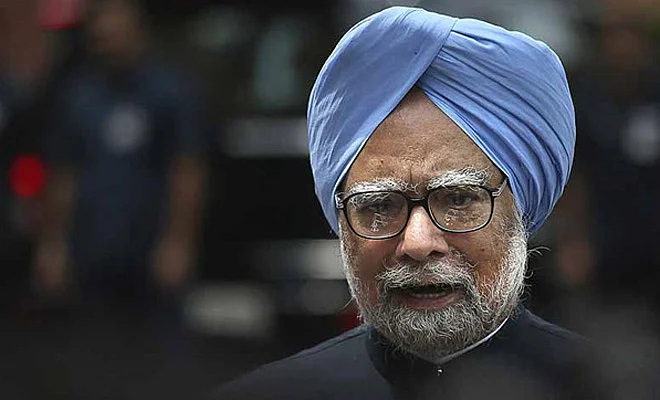India-US summits are often viewed as isolated events. Media and public expectations often focus on what specific deliverables – if any – will result from meetings between the two countries’ leaders. But only a few significant breakthroughs should be expected when Narendra Modi travels to the United States for the fourth time as India’s prime minister.
Rather, he will attempt to consolidate the India-US relationship, and see it through a period of political transition in the United States for the first time in eight years.
The fact is that India and the United States have come a long way since 2008, the year that Barack Obama was elected US President. Earlier that same year, Prime Minister Manmohan Singh took the unusual step of putting the future of his government on the line over a matter of foreign policy – specifically, a civilian nuclear agreement with the United States.
Dr Singh barely survived a vote of no confidence in the Lok Sabha. History might have proceeded very differently had he failed.
The Honeymoon Period
The years between 1998 and 2008 had been heady ones for India-US relations. Following a brief period of US-led sanctions following India’s 1998 nuclear tests, the two sides made efforts to turn a new page in their relationship.
Indian Prime Minister Atal Bihari Vajpayee was swift in trying to assuage some of Washington’s concerns and described the two countries as “natural allies.”

An intense period of negotiation on India’s nuclear status culminated in the historic visit of US President Bill Clinton to India in 2000. Meanwhile, American concerns over Y2K – the Millennium bug – gave a boost to India’s nascent software industry, helping it to evolve into a global presence.
The two countries were soon talking about collaboration on ballistic missile defence (BMD) and India went so far as to seriously contemplate sending troops to Iraq in 2003 to support the US-led state-building efforts in that country.
The big breakthrough came in 2005, when the two countries signed a ten-year defence framework agreement, and laid out the terms for a civilian nuclear agreement that would bring India into the global nuclear mainstream.
That same year, a senior US State Department official said blandly that the United States’ “goal is to help India become a major world power in the 21st century…We understand fully the implications, including military implications, of that statement.”

Two years later, India and the United States – along with Australia, Japan, and Singapore – held large-scale multilateral naval exercises in the Bay of Bengal.
Initially, the post-2008 era looked likely to belie some of the more enthusiastic predictions that resulted from these developments. Just months before Barack Obama’s election, the United States experienced a financial crisis that had severely negative repercussions for its economy and affected its global credibility.
Enter, the GFC
In the aftermath, Washington made attempts at reaching an accommodation with a more confident China on Asian and global issues, much to India’s chagrin. US counter-terrorism imperatives in Afghanistan and Pakistan also defined the new administration’s approach to India’s neighbourhood, side-lining some of New Delhi’s concerns.
It was not just the United States that was economically weakened and distracted. After an initial resurgence following the Global Financial Crisis, India’s economy too began to slow, with growth tumbling between 2010 and 2012. Fiscal profligacy, bad loans, corruption scandals, and policy fluctuations deterred investment, and India adopted a more cautious approach in many of its foreign dealings, including with the United States.
The symbolic low point in bilateral relations arguably came in late 2013, when the detention of an Indian deputy consul general in New York by US authorities resulted in a nasty public spat between the two governments. The incident, and its handling, was perhaps more a symptom than a cause of the poor state of relations.
Reviving the Relationship
The last two years have seen a gradual upswing, with particularly important strides on the security dimensions of the relationship. For Washington, the partnership with India is now an integral element of the US rebalance to Asia. India, meanwhile, has become less shy about considering opportunities to enhance the strategic partnership. The strategic convergence is manifesting itself in practical outcomes.
The value of US defence deliveries to India in the years 2012-2015 saw a thirteen-fold increase over 2005-2008. By 2017, India will have launched 16 US satellites, marking collaboration of a kind that would have been impossible a decade earlier.
For New Delhi, the US also remains a major source of technical, technological, and financial support to assist in India’s domestic transformation. Today, India enjoys a $27 billion surplus in goods and services trade with the United States, and US foreign direct investment to India has increased from $1.8 billion in 2008 to $4.2 billion in 2015.
Yet for all the progress, the relationship still requires continuous tending in order to overcome hurdles and manage divergences. While consultations and cooperation in Asia have improved, corresponding to a clearer alignment of interests, differences remain on many issues, such as in Pakistan, Afghanistan, and the Middle East or on intellectual property and trade.
Managing these and other challenges will be particularly important as India, the United States, and the world, experience important political, economic, social, and technological transitions over the coming years.
(The author is Fellow, Foreign Policy with Brookings India. This article is adapted from ‘India-US Relations in Transition’, a Brookings India publication.)
(At The Quint, we are answerable only to our audience. Play an active role in shaping our journalism by becoming a member. Because the truth is worth it.)
